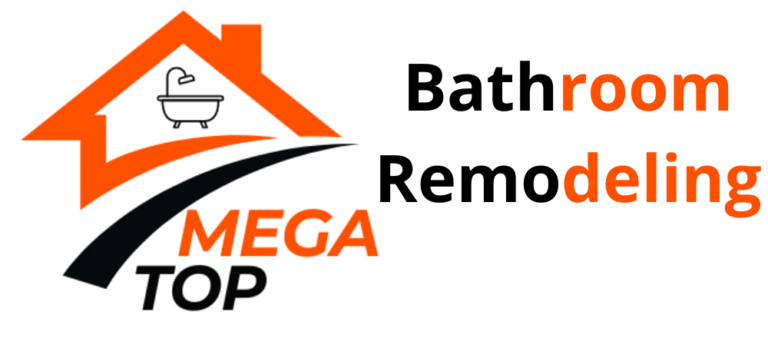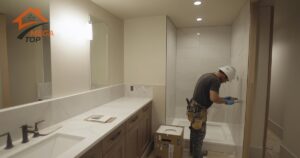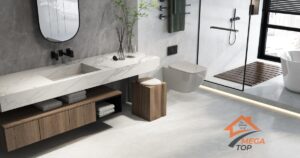Understanding Bathroom Remodel Costs
Bathroom remodel costs can vary significantly based on the scope of the project and the materials chosen. On average, a mid-range bathroom remodel can range from $10,000 to $25,000, but high-end remodels can cost upwards of $50,000. The costs depend on factors like the size of the bathroom, the extent of structural changes, and the quality of fixtures. While every remodel has multiple expense areas, some specific parts tend to be much more costly than others.
Most Expensive Parts of a Bathroom Remodel
1. Plumbing and Electrical Work
Plumbing and electrical work often represent the most expensive part of a bathroom remodel. This is particularly true if your project involves moving plumbing lines or upgrading the electrical system to meet modern codes. These changes require skilled labor, and the complexity can drive up costs significantly.
- Plumbing relocation vs. retrofitting: Relocating plumbing lines for showers, sinks, or toilets adds to the expense, as it involves breaking through walls or floors. Retrofitting new fixtures into existing spaces is generally less costly, but the condition of the current pipes or wiring may still demand upgrades.
Upgrading outdated plumbing systems also adds to the cost, especially in older homes, where pipes may need to be replaced to accommodate modern fixtures. Electrical work, such as rewiring for lighting, heated floors, or a new fan system, also requires professional installation, increasing the budget.
2. Tile and Flooring Installation
Tile work, whether for the shower, floors, or walls, can be one of the costliest aspects of a bathroom remodel. The price varies depending on the type of tile you choose, from affordable ceramic tiles to premium natural stone or custom mosaic designs.
- Custom vs. prefabricated tiles: High-end tiles, such as natural stone or designer options, can cost significantly more than standard ceramic tiles. Additionally, custom designs or intricate patterns require more labor and increase the overall remodel bathroom cost.
Even the installation process affects the price. Complex patterns, mosaics, or larger tile formats often take longer to install and therefore cost more. Floors with underfloor heating also add to the expense, both in materials and labor.
3. Bathroom Fixtures and Fittings
Bathroom fixtures like faucets, showerheads, sinks, and toilets also contribute significantly to the total cost. High-end finishes such as brushed nickel, bronze, or gold plating can make a substantial difference in price compared to standard options.
- Custom bathroom vanity costs: Custom vanities or cabinetry also add to the expense, especially when made from high-quality woods or designed with unique, built-in storage solutions. Prefabricated vanities are more affordable but may not provide the same functionality or aesthetic appeal as custom-built pieces.
If you're considering adding luxury features like rainfall showerheads, smart mirrors, or touchless faucets, expect your budget to increase accordingly.
4. Shower and Tub Installation
The shower and bathtub can be another major expense, particularly if you’re opting for a luxury design. Custom-built showers with multiple showerheads, steam features, or high-end tiles will increase both labor and material costs. Similarly, freestanding tubs, especially made from premium materials like cast iron or natural stone, can be expensive.
- Custom showers vs. prebuilt units: Custom shower installations with tiled walls, glass enclosures, and built-in benches cost much more than prebuilt, fiberglass or acrylic units. The complexity of the design and the materials used are key factors in driving up costs.
Walk-in showers have become a popular upgrade, but they often require significant waterproofing and drainage work, which adds to the cost.
5. Cabinets and Storage Solutions
Cabinetry is another part of the remodel where costs can escalate quickly. Custom cabinets, tailored to fit your bathroom's exact layout and storage needs, are more expensive than pre-made options but offer better functionality and style.
- Custom-built cabinets vs. store-bought: While store-bought cabinetry can save on costs, it may not optimize your bathroom space as efficiently as custom solutions. Custom cabinets are designed to fit awkward spaces and maximize storage, but the cost for materials, craftsmanship, and installation is higher.
Factors that Drive Up Costs in a Bathroom Remodel
Several other factors can increase the total cost of a bathroom remodel. If your project involves changing the layout or expanding the space, these changes often require moving plumbing, rerouting electrical wiring, or reinforcing the structure, all of which add to the budget.
- Size and layout changes: Expanding a bathroom or significantly altering the layout requires more extensive work, including demolition, structural adjustments, and additional plumbing and electrical work.
- Quality of materials: High-end materials, such as natural stone tiles, marble countertops, or custom cabinetry, come with higher price tags, and labor costs are often higher due to the specialized installation techniques required.
- Labor and installation fees: Skilled labor is necessary for plumbing, electrical work, and detailed tile or stone installations. The quality of the work and the complexity of the remodel can affect labor costs, which vary based on local contractor rates.
How to Save on Bathroom Remodel Costs
While bathroom remodels can get expensive, there are several ways to manage costs without sacrificing quality or style.
- Reuse existing fixtures where possible: If your current bathroom fixtures are in good condition, consider refinishing or reusing them instead of purchasing new ones.
- Opt for standard tiles and flooring options: Instead of splurging on custom tiles, opt for standard options that still provide a stylish look but at a fraction of the cost.
- Get multiple quotes from professionals: Comparing quotes from multiple contractors can help ensure you’re getting the best price for the job. It’s also essential to choose a contractor with a good reputation to avoid costly mistakes down the line.
The Value of Budget-Friendly Remodel Ideas
Choosing budget-friendly materials that still offer durability and aesthetic appeal can significantly reduce your bathroom remodel cost. Additionally, focusing on updating key features, like fixtures and tiles, instead of completely overhauling the space can help manage expenses.
DIY vs. Professional Bathroom Remodel Services
For homeowners looking to save, DIY remodel projects might seem tempting, but it’s important to weigh the risks. While you might save on labor costs, the potential for mistakes—especially in plumbing, electrical, or tile installation—can lead to higher costs down the road.
- Risks of DIY: Poorly installed plumbing can lead to leaks and water damage, which will require costly repairs. Incorrectly installed tiles can result in an uneven surface or cracks, diminishing the overall quality of the remodel.
Benefits of Hiring a Licensed Contractor
Hiring a licensed professional ensures that your remodel meets local building codes, is completed with quality workmanship, and uses proper materials. A professional contractor will also have the experience to avoid common pitfalls, ensuring your bathroom remodel stays within budget and lasts for years to come.
By understanding the most expensive parts of a bathroom remodel, you can make informed decisions to manage your budget effectively. Ready to start your bathroom renovation? Contact a professional contractor today to get expert guidance and a customized quote for your project!
FAQ
Plumbing and tile installation typically have the highest costs due to labor and materials.
On average, bathroom remodels can cost anywhere from $10,000 to $25,000, depending on materials and labor.
While DIY can save on labor, it comes with risks. Hiring a professional ensures quality work and long-term savings.
Plumbing often involves rerouting pipes, upgrading fixtures, and meeting building codes, which increases labor costs.
Custom cabinets can maximize space and provide a high-end look, but they are more expensive than prefabricated options.





